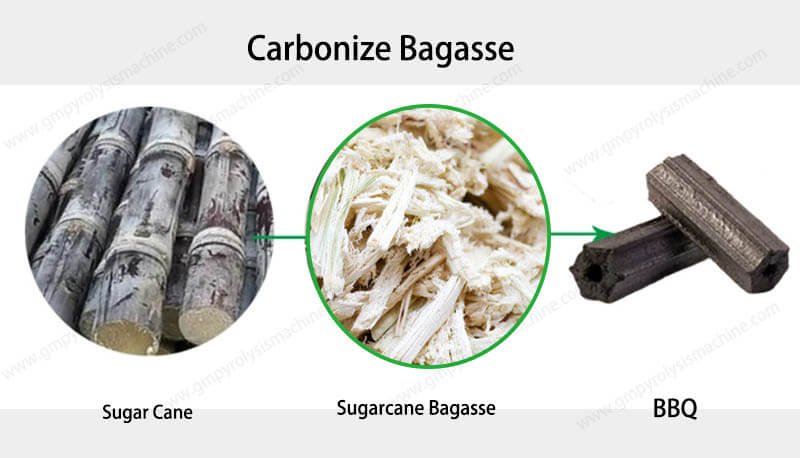Bagasse Introduction
Bagasse, the fibrous residue left after extracting juice from sugarcane, is a valuable resource for producing biochar through carbonization. This process not only reduces waste but also generates a versatile product with numerous applications in agriculture and industry. In this article, we will explore how to carbonize bagasse effectively.
What is Carbonization?
Carbonization is the process of converting organic materials into a carbon-rich product, commonly known as biochar, by heating them in the absence of oxygen. This process, also called pyrolysis, breaks down the organic matter, leaving behind a stable form of carbon that can be used for various purposes.
Steps to Carbonize Bagasse
1. Preparation of Bagasse
Drying: Start by drying the bagasse to reduce its moisture content. This is crucial because excess moisture can affect the carbonization process. Typically, the moisture content should be below 15%.
Shredding: Shred the dried bagasse into smaller, uniform pieces. This increases the surface area, making the carbonization process more efficient.

2. Loading the Carbonization Reactor
Feeding: Load the shredded bagasse into a carbonization reactor. The reactor can be a batch or continuous type, depending on the scale of your operation.
Sealing: Seal the reactor to ensure an oxygen-free environment. This is critical to prevent combustion and ensure proper carbonization.
3. Heating and Pyrolysis
Temperature Control: Heat the reactor to a temperature range of 4⅓0-600°C (800-1,112°F). The exact temperature depends on the desired properties of the biochar.
Pyrolysis Time: Maintain the temperature for a specified duration, typically 1-4 hours, to allow for complete pyrolysis. During this time, the bagasse undergoes thermal decomposition, releasing volatile gases and leaving behind biochar.
4. Cooling and Collection
Cooling: Allow the reactor to cool down before opening it. This prevents the risk of fire and ensures the biochar is stable.
Collection: Collect the biochar from the reactor. It can be further processed, such as grinding or sieving, depending on the intended application.
Applications of Bagasse Biochar
Agriculture: Bagasse biochar is used as a soil amendment to improve soil fertility, water retention, and crop yields. It also helps in sequestering carbon, contributing to sustainable farming practices.
Industrial Uses: Biochar can be used in various industrial applications, including water filtration, adsorption of pollutants, and as a raw material in the production of activated carbon.
Conclusion
Carbonizing bagasse is a sustainable and efficient way to produce biochar, a valuable resource with multiple applications. By following the steps outlined above, you can successfully convert bagasse into high-quality biochar, contributing to both environmental and economic benefits.
For more information on bagasse carbonization or to discuss potential solutions for your specific needs, feel free to contact us. Our team of experts is here to provide comprehensive support and ensure a successful and sustainable carbonization operation.




